Blue Green Violet Color Palette Paintings With Artist and Title
Discover the rich possibilities that violets can add to your palette.
By Michael Chesley Johnson

"Roses are red, violets are blue…" Well, we all know the color violet isn't blue. On the color wheel, it lies somewhere between blue and red. But would you say the flower called violet is violet in color — or is it more of a purple?
Meet the Violet Family
The words "violet" and "purple" are often used inter-changeably. Artists, however, usually consider violet to be closer to blue on the color wheel, with purple closer to red. For scientists, violet is a spectral color with a wavelength between 380 to 420 nanometers on the electromagnetic spectrum. Purple, on the other hand, is an extra-spectral color; that is, it doesn't exist on the electromagnetic spectrum, which means you'll never see it in a rainbow. Instead, purple is a perceived composite color consisting of the spectral colors blue and red. And what about magenta? It, too, is extra-spectral, consisting of the spectral colors violet and blue. In this article, I'll treat all these colors as part of the violet family.
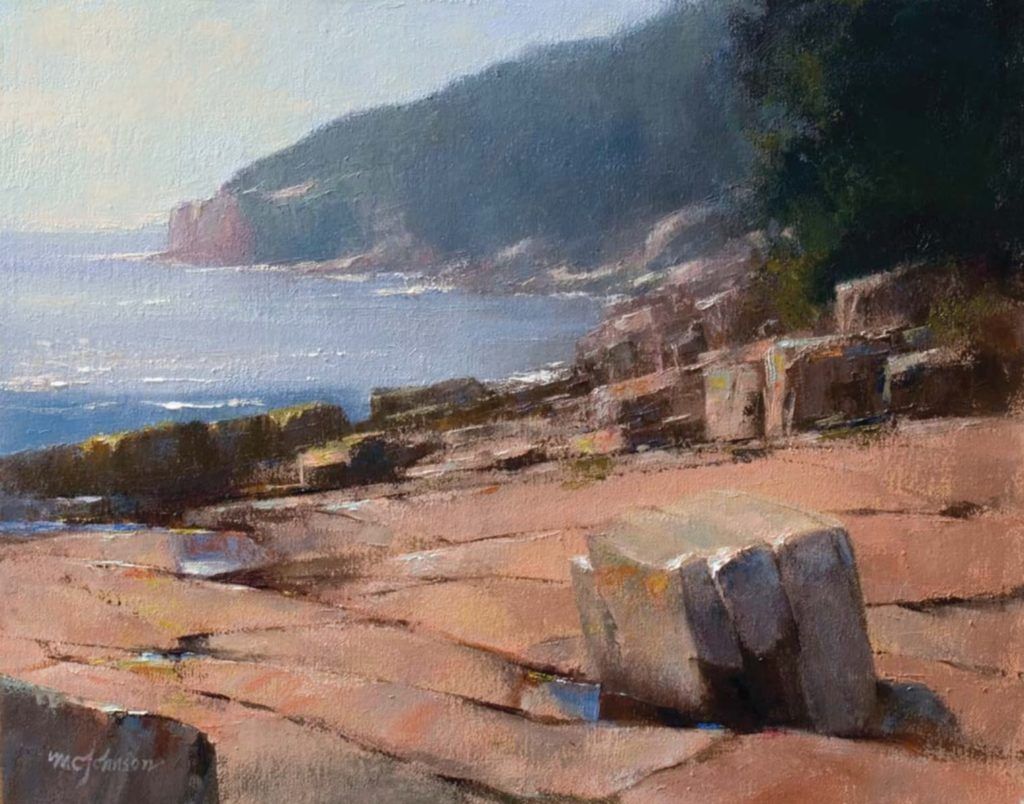
What Are Violets Good For?
Violets are often overlooked in the oil painter's palette. If we need a violet, we tend to mix one from red and blue, but a tubed violet made from a single pigment, rich and clean, can be an asset. Before I get into that, however, let's look at what we can do with violets.
One of my favorite color schemes is based on a triad of secondary colors: green, orange, and violet. These are colors often found in the landscape. They appear in vegetation, from warm oranges in sunny spots to cooler greens in half-tones to coolest violets in shadows. I can also make warm, earthy greens with violets by adding yellow. (See Landscape in Green, Orange and Violet.)
I can make violets warmer or cooler depending on what colors I mix into them. I may mix in a little alizarin crimson to warm up a violet or mix in cobalt blue to cool it down. I've learned I can make an incredibly dark, transparent neutral that approaches black with dioxazine purple and phthalocyanine green. I use this for my darkest dark in rocks and vegetation.
Beautiful grays are another possibility with violets. Many tubed violets are so dark you can't tell their true color without adding white, which also cools and "grays" them. By adding tiny amounts of other colors, you can shift these muted violets to a whole spectrum of grays.
Mixed Violets
Mixtures of different reds and blues yield different violets. Here you see a grid of six different violets mixed from three different blues. In the top row I added cadmium red medium and white to each blue; in the bottom row, I added alizarin crimson and white to each blue. The intensity and temperature of a violet will vary, of course, with the proportion of its components. To see how this works, make your own swatches.
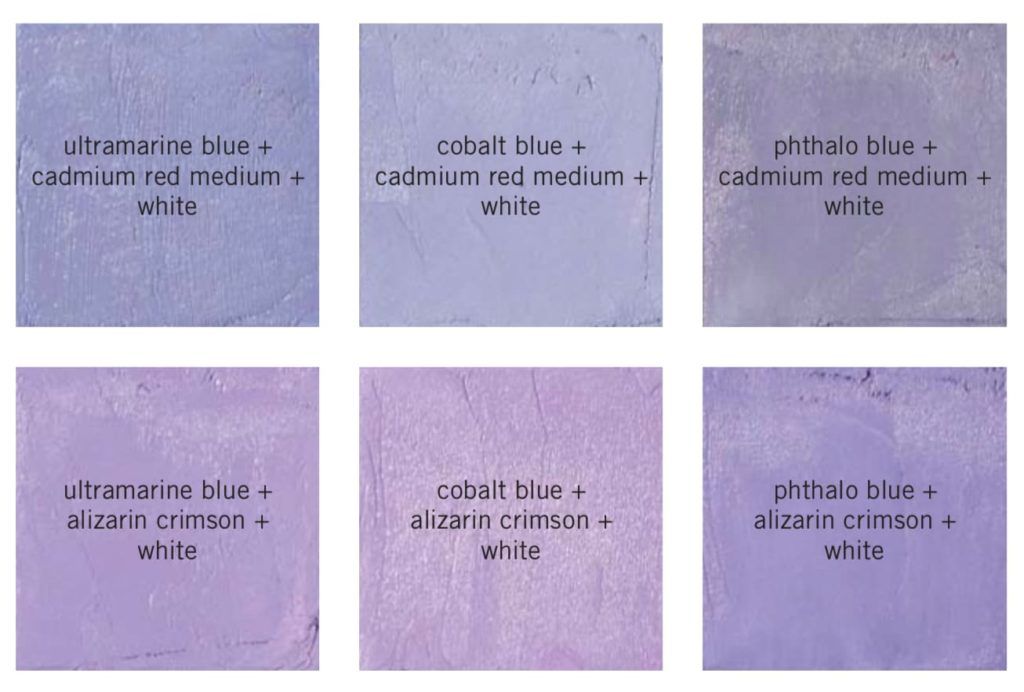
Tubed Violets
The top row of swatches shows color drawdowns of six violets by Gamblin Art- ist's Oil Colors (although quinacridone magenta is listed on the Gamblin website as a red, to my eye it's close enough to violet to be included here). The thicker paint at the bottom of the drawdown swatches is the mass tone of the color. The undertone became evident as I drew the paint out thinly toward the top of the swatch. A visible pencil line a third of the way from the top indicates the transparency of the paint. Note that dioxazine purple is such a powerful, staining color that, although transpar- ent, it nearly obscures the pencil line. The bottom row of swatches shows a tint of each color, made with titanium-zinc white. Violets are often so dark, white needs to be added to make the color easier to see.
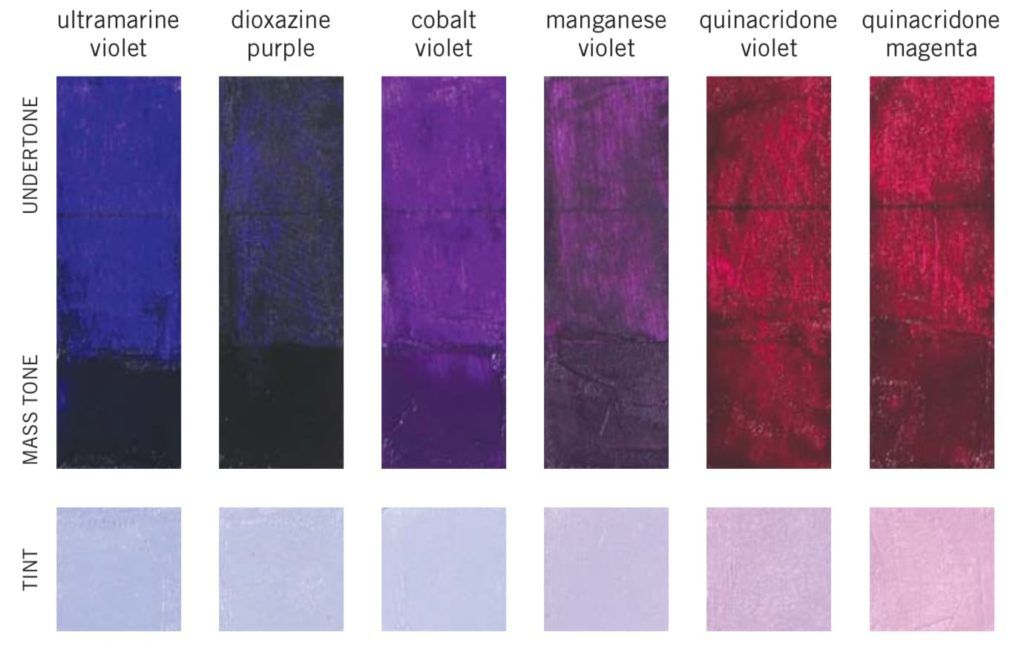
Mixed or Tubed Violets?
Chances are you mix your violets from red and blue — but which red and which blue? In my split-primary palette, for example, I have a warm and a cool version of red and blue (and yellow). With cadmium red light (a warm red) and ultramarine blue, I can mix a violet that's warm and somewhat dull. If, however, I substitute alizarin crimson (a cool red) for the cadmium red light, I get a violet that's cooler and more intense. Why? Because the richest violets are made from reds that lie closer to blue, like alizarin crimson, and from blues that lie closer to red, like ultramarine blue. For better understanding, try some color experiments while referring to a color wheel. (See Mixed Violets, above.)
Buying violet paints is the alter- native to mixing them (see Tubed Violets, above). Some violets, such as ultramarine violet, are made from minerals or metals. Others, such as quinacridone violet, are made from a modern, organic pigment. Tubed violets made from a single pigment are inherently richer, more intense and more transparent than any mixture you could make. They also tend to have a higher tinting strength and to stay cleaner in color mixtures.
Next time you see a patch of garden or wild violets, ask yourself, "Are they violet or purple?" What colors on your palette would you use to paint them?
Demo: Landscape in Green, Orange, and Violet
I decided to paint a landscape with a limited palette based on a triad of secondary colors: green, orange and violet. The landscape is often composed of these hues.
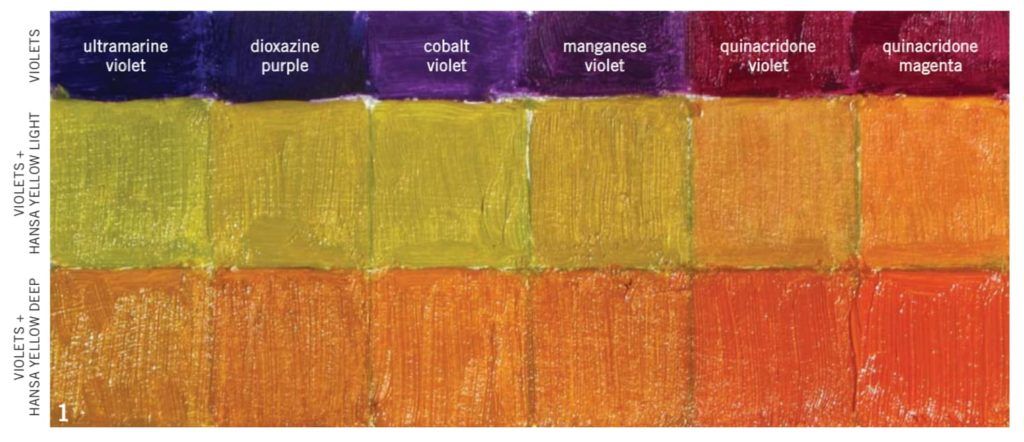
1. Green Mixtures
First I experimented with color mixtures. Mixing violet and yellow can produce beautiful greens, so I took six violets and mixed each with two different yellows. I came up with greens ranging from a cool blue-green to a warm, orangey green. As always, I suggest you experiment with your own swatches.
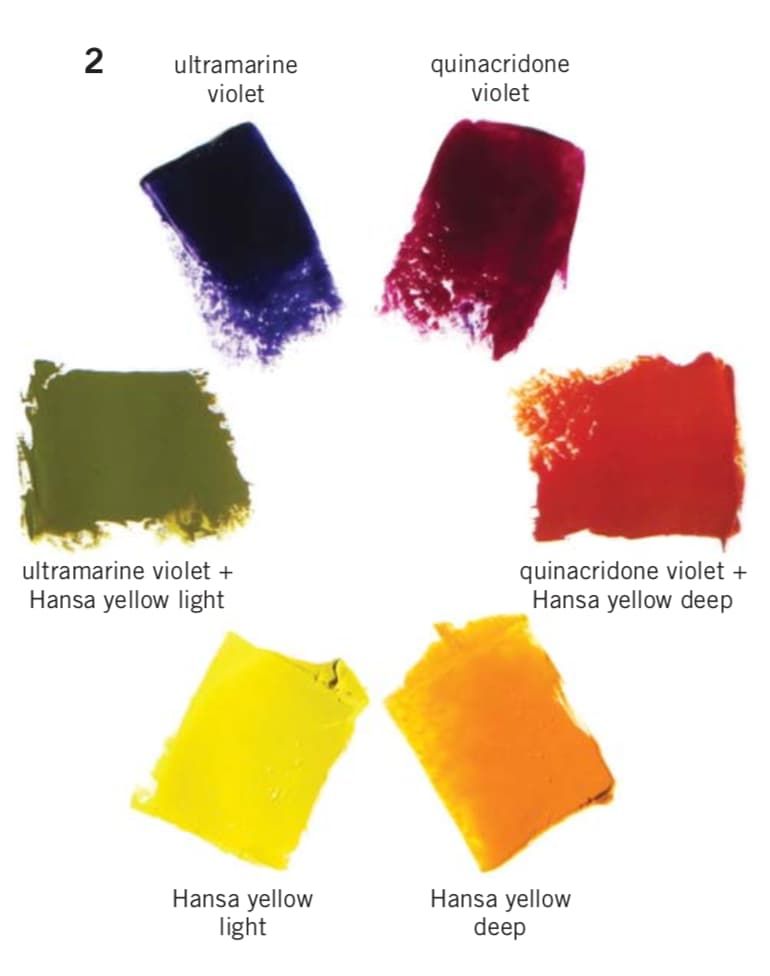
2. Palette
From my experiments, I chose a foundation of two violets: quinacridone violet (warm/ more red) and ultramarine violet (cool/more blue). I also selected two yellows: Hansa yellow light (cool/ more blue) and Hansa yellow deep (warm/more red). Then I mixed Hansa yellow light and ultramarine violet to create a warm olive- green. I mixed Hansa yellow deep and quinacridone violet to get a warm red- orange. This resulted in four of my six colors containing violet, ensuring a harmonious palette.

3. Underpainting
I toned the canvas with burnt sienna to eliminate the white of the surface and provide a warm backdrop for the painting.
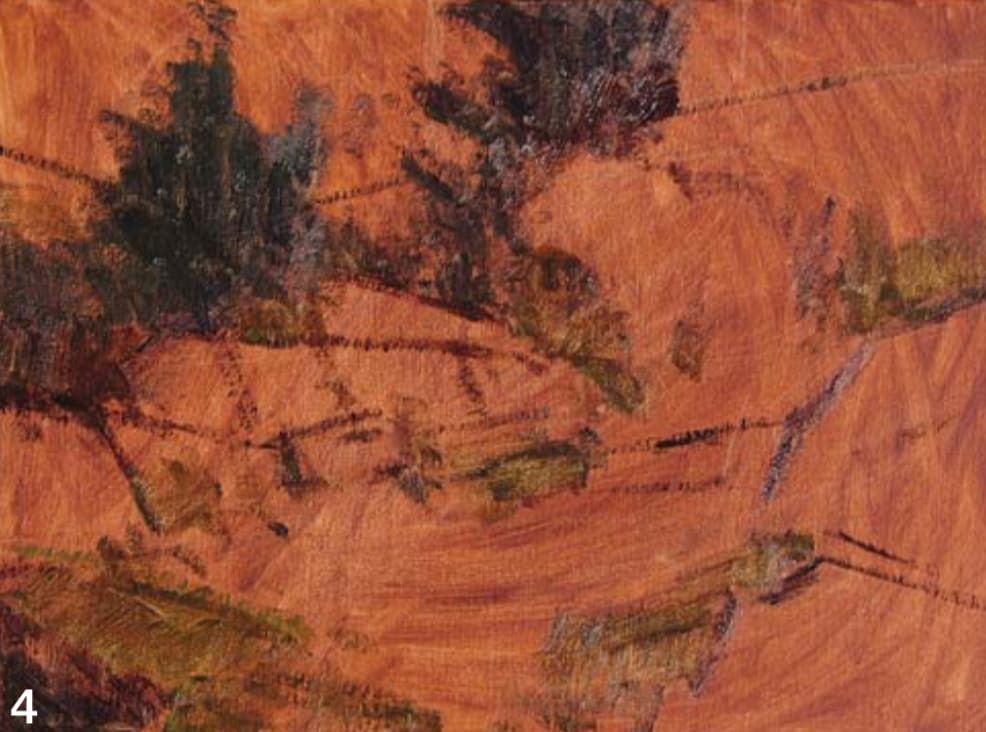
4. Blocking in Foliage
Using my warm green and ultramarine violet, I blocked in the darkest darks of the tree and vegetation. I then blocked in the next, lighter darks, using the same mixture with a touch of white added.
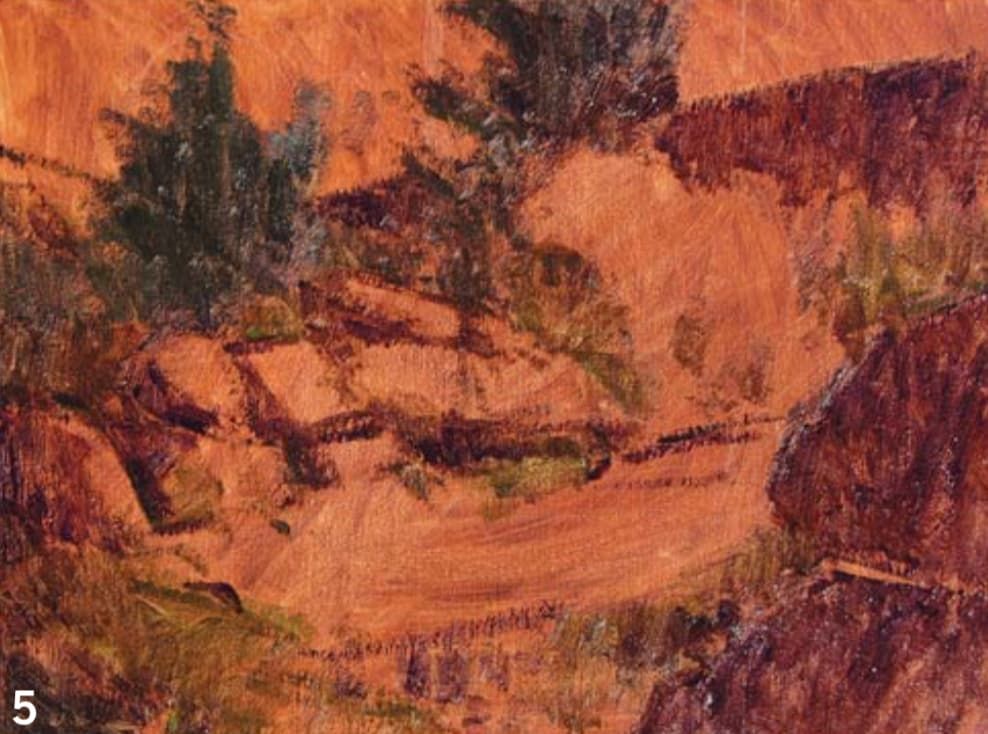
5. Blocking in Land Forms
Continuing the block-in, I massed in the dark values of rocks and distant hills with ultramarine violet.
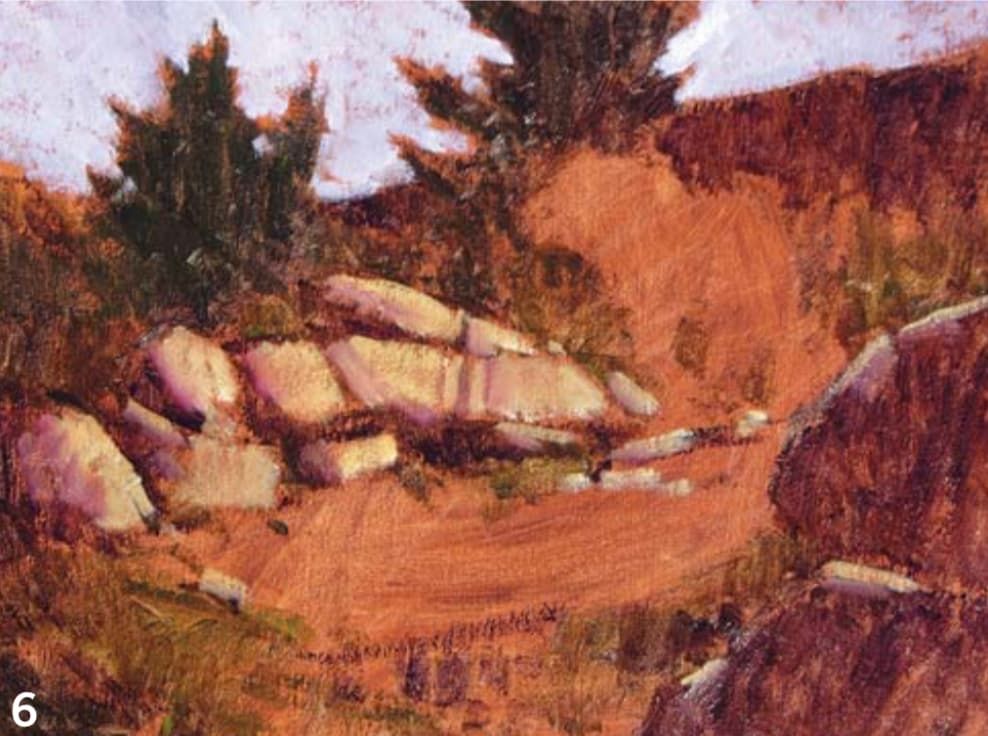
6. Begin Sky and Lighter Values
Still working on the block-in, I painted the sky with ultramarine violet and white. For my sunnier green passages, I used warm orange with warm green. For the lightest values of the rocks, I used warm orange and white. I added touches of warm violet to the rock shadows.
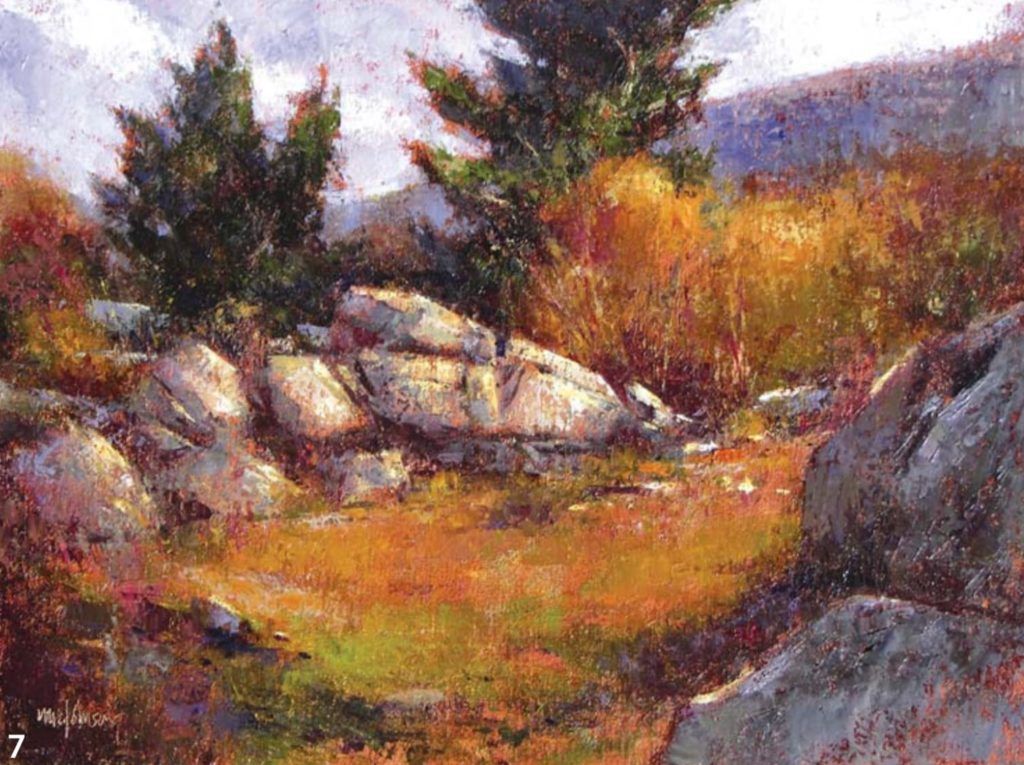
7. Make Final Adjustments
To finish the painting, I used a variety of my mixtures to adjust for atmospheric perspective, correct shadow colors and so on. I wanted
to maintain a sense of mystery, so I kept the light key low. To evoke the sense of a sunny day, I heightened the chroma of the sky with clean mixtures of ultramarine violet and white. I worked more pure ultramarine violet and quinacridone violet into the shadows to deepen, darken, and enrich them, thus finishing Enchanted Circle (oil on canvas, 16×20).
Michael Chesley Johnson is a contributing editor for Artist's Magazine and author of Outdoor Study to Studio: Take Your Plein Air Paintings to the Next Level. He also teaches plein air workshops throughout the United States and Canada. Visit his website at michaelchesleyjohnson.com.
You may also like:
- Revitalize Your Palette by Going Green
- These Violet Delights
- How to Overcome Your Fear of Certain Hues
Source: https://www.artistsnetwork.com/art-mediums/oil-painting/lets-explore-vivid-violets-a-demo/
0 Response to "Blue Green Violet Color Palette Paintings With Artist and Title"
Post a Comment